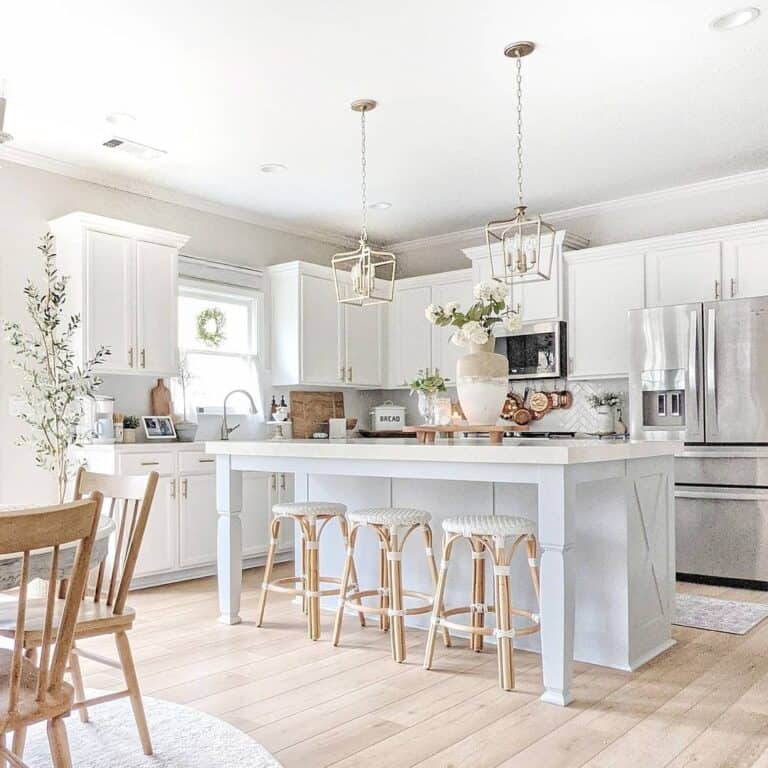Discover Modern and Classic Styles in Legs For Kitchen Island Projects
Discover Modern and Classic Styles in Legs For Kitchen Island Projects
Blog Article
Vital Elements to Consider When Selecting Legs For Cooking Area Island
Choosing the ideal legs for a kitchen area island entails a careful evaluation of numerous elements that can substantially influence both performance and visual allure. As we explore these aspects, it comes to be clear that each decision can have significant effects for the overall kitchen experience.
Product Options
When picking legs for a kitchen island, understanding the different product alternatives is important for accomplishing both visual allure and structural integrity (Legs For Kitchen Island). The option of product dramatically affects not only the resilience of the island yet additionally its total design and functionality
Wood is a prominent option, using heat and convenience. Strong woods, such as oak or maple, provide strength and can be stained or painted to match the kitchen design. Metal legs, typically made from stainless-steel or functioned iron, add a industrial and contemporary feel while guaranteeing sturdiness and stability. These materials are resistant to wear and can support significant weight, making them ideal for bigger islands.
One more option is crafted products, like MDF or plywood, which can be much more affordable while still offering a range of coatings. Nevertheless, they may not provide the very same level of stability as strong wood or steel. Materials such as acrylic or glass can create a modern look, though they might require added support to make certain stability.
Ultimately, the choice of material for cooking area island legs ought to straighten with the preferred capability and the overall motif of the kitchen.
Design And Style

When taking into consideration design, the form and surface of the legs are important. Conical legs can supply a sense of lightness and beauty, while thicker, more robust legs can share toughness and security. Furthermore, the surface-- be it painted, stained, or all-natural-- need to match the cabinets and counter top materials to develop a unified appearance.
Additionally, the design of the legs can also mirror individual taste. Custom or attractive legs, such as those including complex carvings or unique geometric forms, can serve as prime focus, including character and personality to the cooking area. Eventually, the best choice will certainly not only boost performance but additionally elevate the visual charm, making the kitchen island a standout attribute of the home.
Height Considerations
Picking the appropriate elevation for cooking area island legs is essential, as it straight influences both functionality and convenience. The typical height for a kitchen area island commonly ranges from 36 to 42 inches, lining up with usual kitchen counter heights.

It is likewise necessary to make up individuals' preferences and elevations. Customizing the elevation can guarantee a comfy experience for all relative, making the kitchen area island an extra satisfying and functional room.
Weight Support
Making sure adequate weight assistance for kitchen island legs is crucial for both safety and performance. The cooking area island commonly serves numerous objectives, consisting of cooking, dining, and additional storage space, demanding a robust assistance structure. When picking legs, it is critical to think about the general weight capacity required based upon the island's meant usage and the products that will certainly be positioned on it.
The option of product for the legs plays a substantial function in their weight-bearing capacities. Solid timber, metal, and heavy-duty composites generally give remarkable toughness compared to lighter materials. Furthermore, the style of the legs-- whether they are right, tapered, or have a pedestal kind-- can influence their ability to distribute weight successfully throughout the framework.
Always speak with the producer's specifications regarding load restrictions to make certain that the legs can maintain the designated weight without compromising safety. In recap, picking kitchen area island legs with sufficient weight support is crucial for developing a risk-free and functional culinary space.
Installment and Upkeep
Proper installation and upkeep of kitchen area island legs are crucial for ensuring long life and visit the website stability. To start, it is important to comply with the manufacturer's standards during installment. This commonly involves safeguarding the legs to the island base using proper fasteners, making certain that the legs are level and straightened. Using a degree tool can aid stop tottering and improve the total aesthetic allure of the kitchen area island.
When mounted, regular maintenance is essential to preserve the stability and look of the legs - Legs For Kitchen Island. For wooden legs, periodic cleansing with a wet cloth and application of appropriate timber gloss can protect against dampness damages and preserve their surface. Metal legs may need a gentle cleaning see this website service to eliminate oil and grime, adhered to by a completely dry towel to prevent rust development
In addition, check the legs frequently for signs of wear or damage, such as cracks or loosened joints. Tightening up screws or screws as required can likewise extend the life expectancy of the legs. By adhering to these setup and upkeep methods, house owners can make sure that their cooking area island stays strong and visually appealing for many years to come.
Conclusion

Visual comprehensibility is paramount in selecting the style and style of legs for a kitchen area island, as these aspects substantially affect the total setting of the space. Tapered legs can provide a sense of lightness and elegance, while thicker, much more robust legs can communicate stamina and stability.Choosing the suitable height for kitchen island legs is important, as it directly affects both functionality and comfort. In summary, selecting cooking area island legs with adequate weight assistance is crucial for developing a secure and useful culinary space.
In conclusion, picking legs for a cooking area island demands cautious consideration of various factors, consisting of product choices, style, elevation, weight assistance, and read more setup.
Report this page